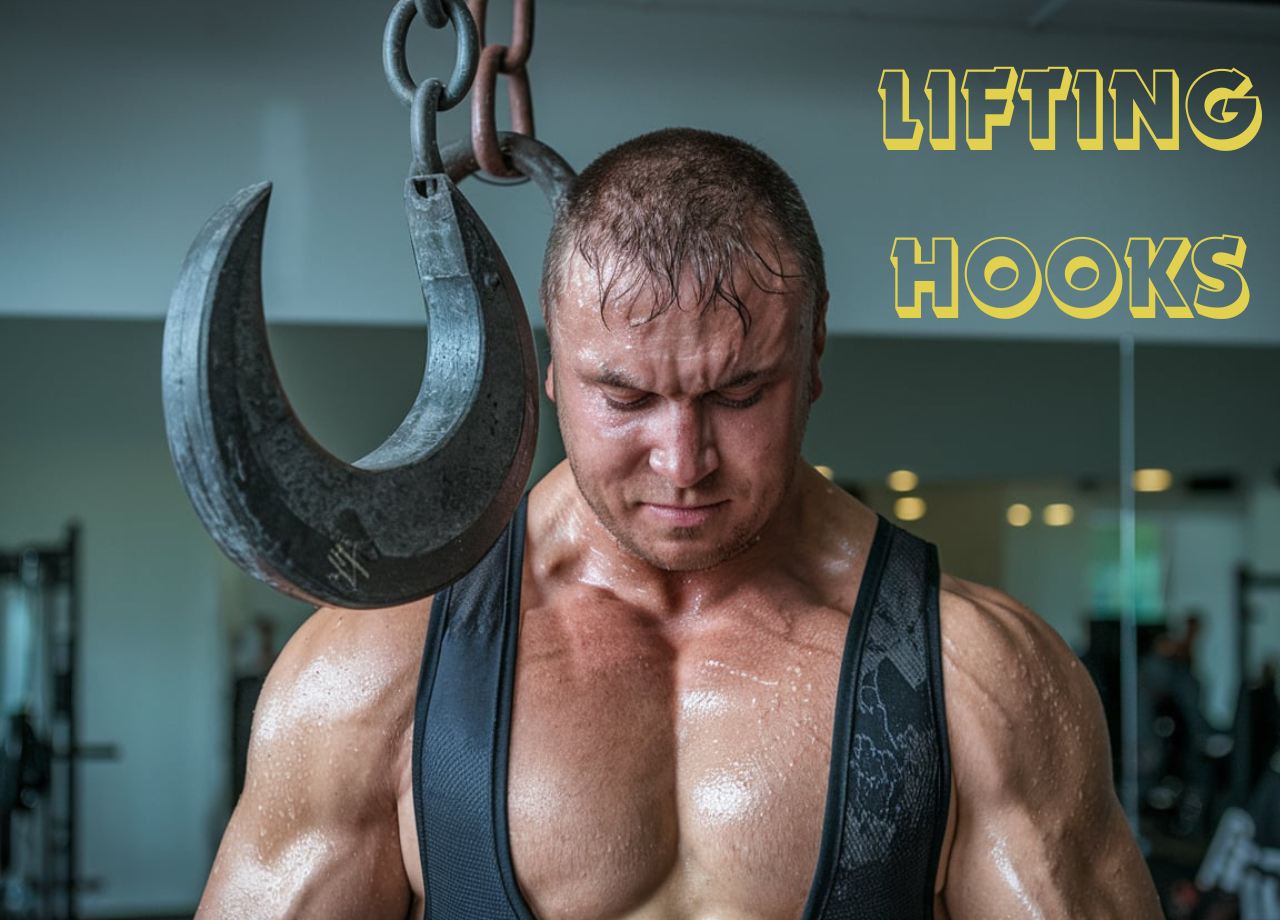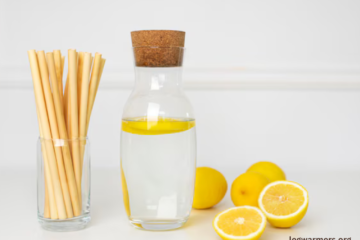Introduction
Grip strength is a game-changer when it comes to deadlifting. It determines how much weight you can handle, influencing your overall performance. Even the most experienced lifters can face challenges if their grip falters. This is where lifting hooks step in as an essential tool to elevate your workout.
Designed to provide extra support during heavy lifts, lifting hooks allow you to concentrate on strength and form instead of worrying about your hands slipping off the bar. With the right lifting hooks, you can safely push your limits, improve your lifting efficiency, and minimize the risk of injuries.
In this comprehensive guide, we’ll discuss why lifting hooks are vital for deadlifting, their benefits, and how they can enhance your overall fitness journey.
Table of Contents
What Are Lifting Hooks?
Lifting hooks are specialized accessories crafted to bolster your grip during heavy lifting sessions. They feature a robust strap or loop that secures around your wrist and a hook—typically made of metal or steel—that latches onto the barbell. These hooks redistribute the effort needed to hold the bar, enabling you to lift heavier weights without taxing your hands.
Constructed from durable materials like steel, lifting hooks are built to endure the rigors of intense training. Many designs also incorporate padded straps or rubber grips for added comfort and stability. Unlike lifting straps, which require wrapping around the bar and your wrist, hooks use the metal component to secure the bar. This unique design reduces hand fatigue and ensures you can maintain proper form throughout your lifts.
Why Choose Lifting Hooks Over Other Accessories?
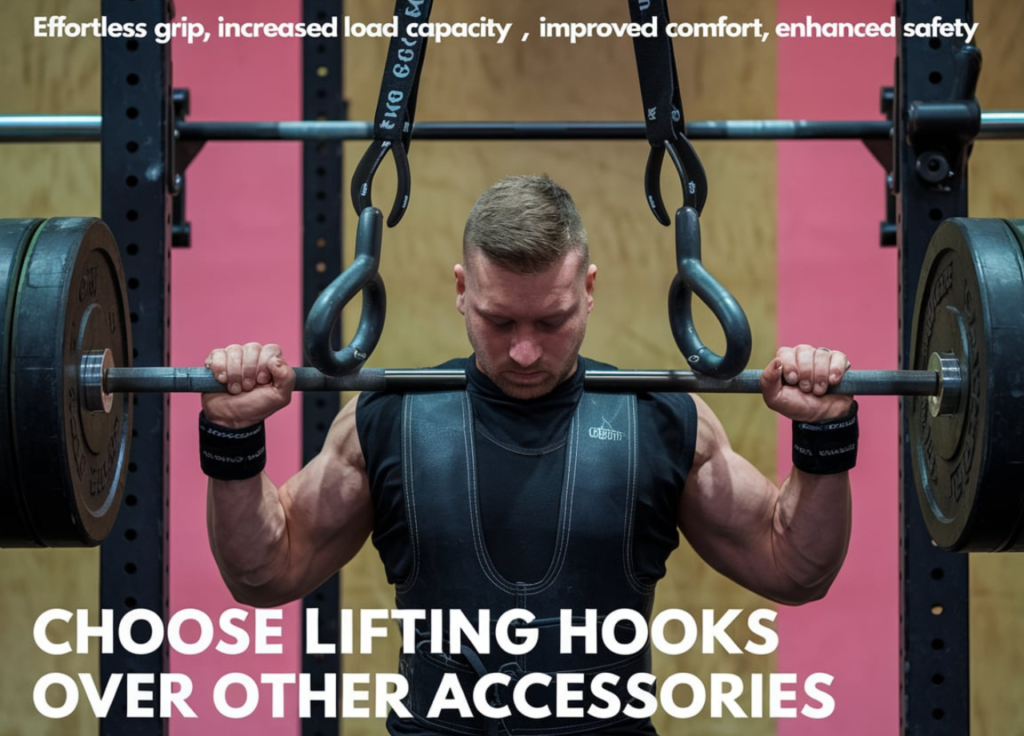
While lifting straps and hooks share the common goal of improving grip strength, lifting hooks stand out due to their enhanced support. Here’s how they compare:
Effortless Grip: Hooks significantly reduce the strain on your hands by taking on the weight of the bar. This enables you to concentrate on the lift instead of worrying about your grip.
Increased Load Capacity: With reduced hand fatigue, you can safely handle heavier weights, which is critical for breaking through plateaus.
Improved Comfort: Padded wrist straps and ergonomic designs make lifting hooks more comfortable during prolonged training sessions.
Enhanced Safety: A secure grip reduces the chances of accidental drops or slips, keeping your lifts safe and controlled.
Whether you’re training for personal records or refining your form, lifting hooks offer the support needed to maximize your potential.
Here’s a rewritten version of your article optimized for SEO and free of plagiarism:
Maximize Your Deadlift with Premium Lifting Hooks for Unmatched Grip
Grip strength is a game-changer when it comes to deadlifting. It determines how much weight you can handle, influencing your overall performance. Even the most experienced lifters can face challenges if their grip falters. This is where lifting hooks step in as an essential tool to elevate your workout.
Designed to provide extra support during heavy lifts, lifting hooks allow you to concentrate on strength and form instead of worrying about your hands slipping off the bar. With the right lifting hooks, you can safely push your limits, improve your lifting efficiency, and minimize the risk of injuries.
In this comprehensive guide, we’ll discuss why lifting hooks are vital for deadlifting, their benefits, and how they can enhance your overall fitness journey.
What Are Lifting Hooks?
Lifting hooks are specialized accessories crafted to bolster your grip during heavy lifting sessions. They feature a robust strap or loop that secures around your wrist and a hook—typically made of metal or steel—that latches onto the barbell. These hooks redistribute the effort needed to hold the bar, enabling you to lift heavier weights without taxing your hands.
Constructed from durable materials like steel, lifting hooks are built to endure the rigors of intense training. Many designs also incorporate padded straps or rubber grips for added comfort and stability. Unlike lifting straps, which require wrapping around the bar and your wrist, hooks use the metal component to secure the bar. This unique design reduces hand fatigue and ensures you can maintain proper form throughout your lifts.
Benefits of Using Lifting Hooks in Deadlifting
Adding lifting hooks to your training arsenal can transform your deadlift performance. Here’s how they make a difference:
1. Elevate Your Performance
By eliminating grip limitations, lifting hooks allow you to lift beyond your natural hand strength. This means more reps, higher intensity, and better results over time.
2. Protect Against Injuries
A weak grip can lead to compromised form, increasing the risk of injuries. Lifting hooks provide the stability needed to maintain proper alignment and reduce strain on your wrists and hands.
3. Extend Workout Duration
Hand fatigue can often cut workouts short. Using lifting hooks allows you to train for extended periods while focusing more efficiently on specific muscle groups.
4. Boost Confidence
Knowing you have a reliable grip tool allows you to focus fully on the lift, boosting confidence and encouraging you to attempt heavier weights.
How to Choose the Best Lifting Hooks for You
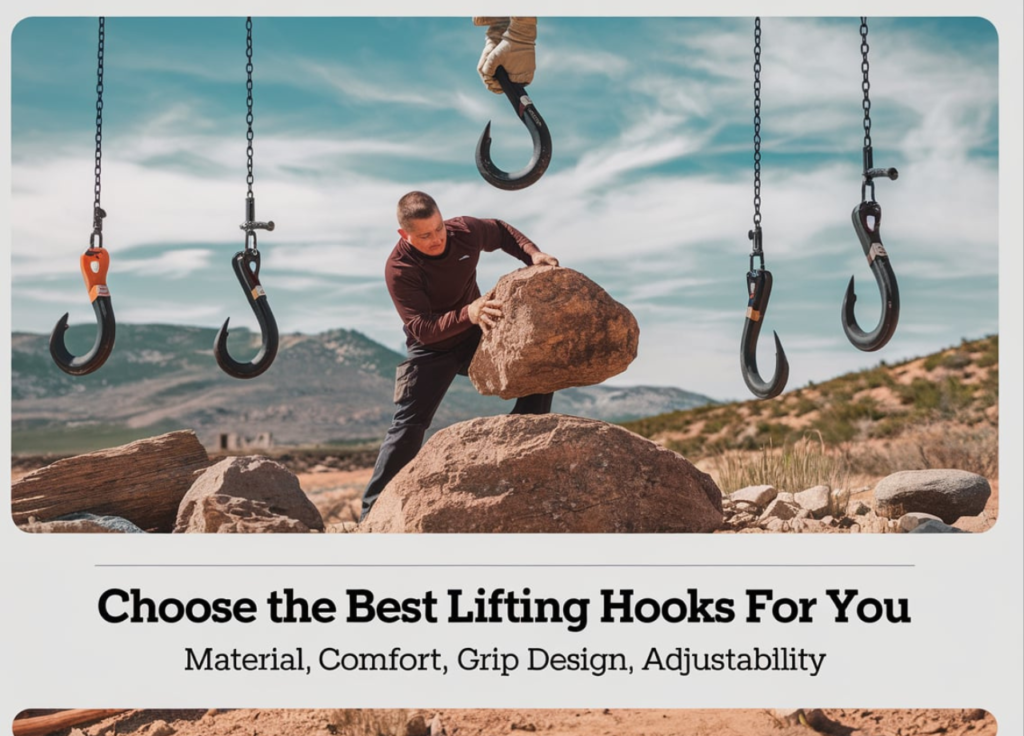
Take the following factors into account when choosing lifting hooks:
Material: Look for high-quality steel hooks with durable straps for longevity.
Comfort: Padded wrist straps and ergonomic designs ensure a secure and comfortable fit.
Grip Design: Some hooks feature rubberized coatings for added traction and stability.
Adjustability: Opt for hooks with adjustable straps to accommodate different wrist sizes.
Benefits of Using Lifting Hooks
Boosted Grip Strength
Lifting hooks offer a powerful solution to enhance your grip strength, particularly as your weights get heavier. During intense lifting sessions, maintaining a secure grip can become increasingly difficult. By incorporating lifting hooks into your routine, you ensure a firm hold on the bar, even during maximum-effort lifts. This additional grip security allows you to fully concentrate on refining your lifting technique, resulting in smoother, more controlled repetitions.
Minimized Grip Fatigue
Many lifters often face the challenge of grip fatigue, particularly during long sets or while managing heavy weights. Lifting hooks significantly reduce this strain by distributing some of the weight away from your hands. This added support minimizes hand fatigue, enabling you to stay focused on your form and extend your workout duration without the constant worry of losing grip.
Enhanced Lifting Potential
Breaking through strength plateaus becomes more achievable with the aid of lifting hooks. Often, a lack of grip strength limits the amount of weight you can lift. By alleviating this limitation, lifting hooks allow you to handle heavier loads, focusing instead on building overall strength. This can accelerate your progress, helping you set and surpass new personal records with ease.
Improved Target Muscle Engagement
A key advantage of lifting hooks is their capacity to improve muscle activation. By relieving grip-related distractions, they help you activate the primary muscles used in lifts, such as your back, glutes, and legs. With a reliable grip, you’re better equipped to maintain proper form, reducing the risk of compensatory movements and potential injuries. This focus on targeted muscle activation not only improves your performance but also ensures a safer and more effective workout.
Essential Factors to Consider When Choosing Lifting Hooks
Selecting the right lifting hooks is crucial for maximizing performance, safety, and comfort during workouts. Whether you’re a seasoned weightlifter or just starting, understanding the key factors to consider will ensure you make an informed decision. Let’s break down the essential elements to look for when choosing lifting hooks.
Material and Durability
One of the most critical aspects of lifting hooks is the material used in their construction. Durable materials like high-grade steel are ideal, as they provide the strength needed to handle heavy weights without bending or breaking. Steel lifting hooks are designed to endure intense pressure, ensuring long-term reliability.
Additionally, consider hooks with padded or rubberized grips. While these features add an extra layer of comfort, the core strength of the material remains the top priority. Opting for high-quality materials guarantees that your lifting hooks will withstand repeated use over time.
Fit and Comfort
Comfort plays a significant role in choosing lifting hooks. A secure yet comfortable fit ensures the hooks remain stable during your workout without causing irritation or discomfort. Look for adjustable straps that allow you to customize the fit to your wrist size. This adaptability not only enhances comfort but also ensures the hooks stay securely in place.
A poorly fitting pair of lifting hooks can distract you from your workout, compromise your performance, and even increase the risk of injury. By prioritizing fit and comfort, you can maintain focus and lift with confidence.
Grip Design
The grip design of lifting hooks greatly influences their effectiveness. Ergonomic or contoured grips are particularly beneficial as they are designed to align naturally with the shape of your hand. This enhances stability and ensures the hooks stay securely attached to the bar throughout your sets.
Consider lifting hooks with anti-slip coatings or textured surfaces for added grip. These features minimize the chances of slipping, making them ideal for intense lifting sessions. A solid grip not only boosts your confidence but also improves your overall lifting technique.
Ease of Use
Efficiency matters, especially when transitioning between exercises. Lifting hooks that are easy to attach and detach save valuable time during your workout. Look for designs that allow for quick adjustments without compromising security.
Some lifting hooks feature user-friendly mechanisms, such as Velcro straps or buckle systems, which simplify the setup process. By choosing hooks that are convenient to use, you can stay focused on your workout and minimize interruptions.
Best Lifting Hooks to Explore: Wyox Sports Lifting Hooks
If you’re on the hunt for dependable and high-performing lifting hooks, Wyox Sports Lifting Hooks emerge as a top contender. These hooks are specifically designed to enhance your lifting experience by combining durability, comfort, and practicality. Whether you’re an experienced weightlifter or a beginner, Wyox Sports Lifting Hooks can help you improve your grip, reduce fatigue, and maximize your performance. Let’s dive into a detailed review of these lifting hooks, highlighting their features, advantages, and potential drawbacks.
Key Features of Wyox Sports Lifting Hooks
- Premium Material: Crafted from heavy-duty, high-quality steel, Wyox Sports Lifting Hooks are built to withstand intense weightlifting sessions. The robust construction ensures long-lasting durability, even under heavy use.
- Reinforced Grip: The hooks feature a textured coating that enhances grip security, reducing the risk of slipping during lifts. This design is particularly beneficial for exercises like deadlifts and rows.
- Adjustable Wrist Support: Equipped with a comfortable, padded wrist strap, these hooks provide a snug fit. The adjustable strap minimizes irritation and delivers added support, enabling longer and more effective workouts.
- High Weight Capacity: Designed for serious lifters, these hooks can handle up to 500 pounds. This makes them ideal for those aiming to push their personal records.
- Positive Customer Feedback: Wyox Sports Lifting Hooks consistently receive glowing reviews for their performance, comfort, and reliability. Many users report noticeable improvements in grip strength and lifting form.
Benefits of Wyox Sports Lifting Hooks
- Enhanced Grip Strength: The reinforced grip design ensures a secure hold on the bar, which reduces the likelihood of slipping during heavy lifts. This feature is particularly valuable for deadlifts and other pulling exercises.
- Comfortable Design: The padded, adjustable wrist strap ensures a comfortable fit, allowing users to focus on their lifts without discomfort or irritation.
- Built to Last: Constructed with high-quality steel and durable materials, these hooks are a reliable investment for lifters who demand longevity and performance from their equipment.
- Supports Heavy Lifting: With a weight capacity of up to 500 pounds, Wyox Sports Lifting Hooks cater to both intermediate and advanced lifters seeking to lift heavier loads safely.
- Versatility: These hooks aren’t limited to deadlifts; they’re also suitable for a variety of exercises, including rows, shrugs, and pull-ups. This versatility makes them a valuable addition to any weightlifting routine.
Potential Drawbacks
- Bulky Design: Some users may find the hooks’ solid construction slightly bulky, particularly if they prefer lightweight or minimalist lifting accessories.
- Adjustment Period for Beginners: Lifters who are new to using grip aids might need some time to get accustomed to the hooks. However, with regular use, this learning curve is typically short-lived.
How Lifting Hooks Enhance Your Deadlift Performance
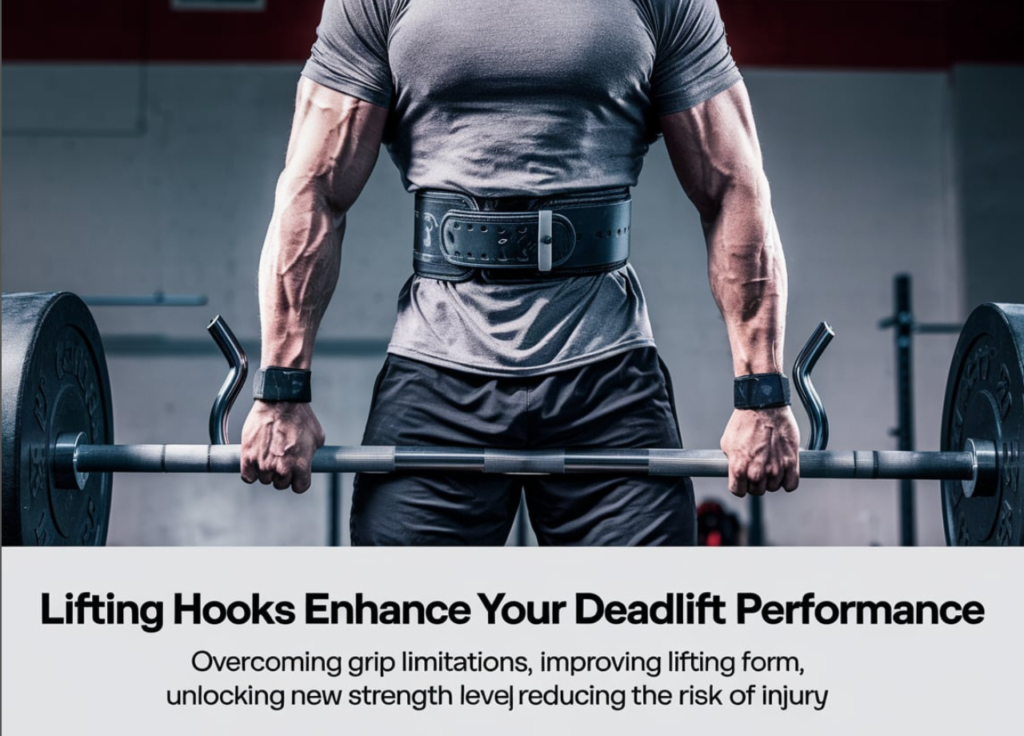
When it comes to maximizing deadlift performance, lifting hooks can prove to be an invaluable tool. By alleviating grip limitations and minimizing fatigue, these simple yet effective accessories enable lifters to focus on proper technique and push past plateaus, ultimately achieving new personal records (PRs).
Overcoming Grip Limitations
One of the primary challenges lifters face as they progress in strength training is grip fatigue. Even when your legs, back, and core are strong enough to handle heavier weights, an insufficient grip can prevent you from reaching your full potential. This is where lifting hooks prove to be essential.
Lifting hooks provide a secure connection to the bar, reducing the strain on your hands and forearms. By shifting the load away from your grip, they allow you to focus entirely on lifting heavier weights with confidence. This means you can train with higher intensity and greater volume, leading to improved performance and more consistent progress over time.
Improving Lifting Form
Maintaining proper form during a deadlift is essential for both safety and effectiveness. When you’re not preoccupied with holding onto the bar, you can concentrate on posture, alignment, and engaging the correct muscle groups—including your hamstrings, glutes, and back.
Lifting hooks help by eliminating the risk of grip slippage, enabling you to maintain optimal form throughout the lift. This focus on proper technique not only allows you to lift heavier weights safely but also reduces the likelihood of injuries, such as lower back strain or muscle pulls. With better form, you can make steady gains while minimizing setbacks.
Unlocking New Strength Levels
Grip failure is one of the most common obstacles for lifters attempting to set PRs. Lifting hooks effectively eliminate this barrier by providing a secure hold on the barbell. This allows you to channel your energy into executing the lift rather than worrying about grip strength.
By training with lifting hooks, you can gradually increase your workload and push beyond your previous limits. This increased capacity for heavier lifting translates into greater strength development across all major muscle groups involved in the deadlift.
Reducing the Risk of Injury
Another significant benefit of lifting hooks is their ability to reduce injury risk. By supporting your grip, they help you maintain a stable and controlled lift, which minimizes strain on your muscles and joints. This is especially important for lifters who are prone to grip fatigue or those recovering from hand or wrist injuries.
With lifting hooks, you can train with confidence, knowing that your grip won’t falter during critical lifts. This not only improves performance but also ensures your body stays in an optimal position throughout the exercise, reducing the risk of injury and keeping you on track toward your fitness goals.
Conclusion
Incorporating premium lifting hooks into your workout routine is a game-changer for anyone serious about deadlifting. These essential accessories provide unmatched grip support, enabling you to handle heavier weights with confidence while reducing the risk of injuries. Whether you’re aiming to break through strength plateaus, improve your form, or extend your workout sessions, lifting hooks are a valuable tool that elevates your lifting performance. Choose the right pair to suit your needs, and unlock your full potential in the gym.
FAQs
1. What are lifting hooks, and how do they work?
Lifting hooks are gym accessories designed to support your grip during heavy lifts. They feature a metal or steel hook attached to a padded wrist strap. The hook latches onto the barbell, reducing the strain on your hands and enabling you to focus on your lift.
2. How do lifting hooks differ from lifting straps?
Lifting hooks use a metal hook to hold the barbell, while lifting straps rely on a looped design that wraps around your wrist and the bar. Hooks provide enhanced grip support and are easier to use, making them ideal for reducing hand fatigue during heavy lifts.
3. Can lifting hooks prevent injuries?
Yes, lifting hooks help maintain proper form by ensuring a secure grip, which reduces the risk of accidental drops and strain-related injuries, particularly during heavy deadlifts and pulls.
4. Who should use lifting hooks?
Lifting hooks are ideal for anyone looking to improve their grip strength, lift heavier weights, or minimize hand fatigue during workouts. They are especially beneficial for advanced lifters, beginners, or those recovering from grip-related injuries.
5. What should I consider when buying lifting hooks?
Key factors include the material (steel for durability), comfort (padded wrist straps), grip design (rubberized or textured for better traction), and adjustability (to fit different wrist sizes). Ensure the hooks match your lifting goals and preferences.
6. Are lifting hooks suitable for all exercises?
Lifting hooks are ideal for pulling exercises such as deadlifts, rows, and shrugs. They are not recommended for pushing movements like bench presses, as they don’t provide added support for these exercises.
